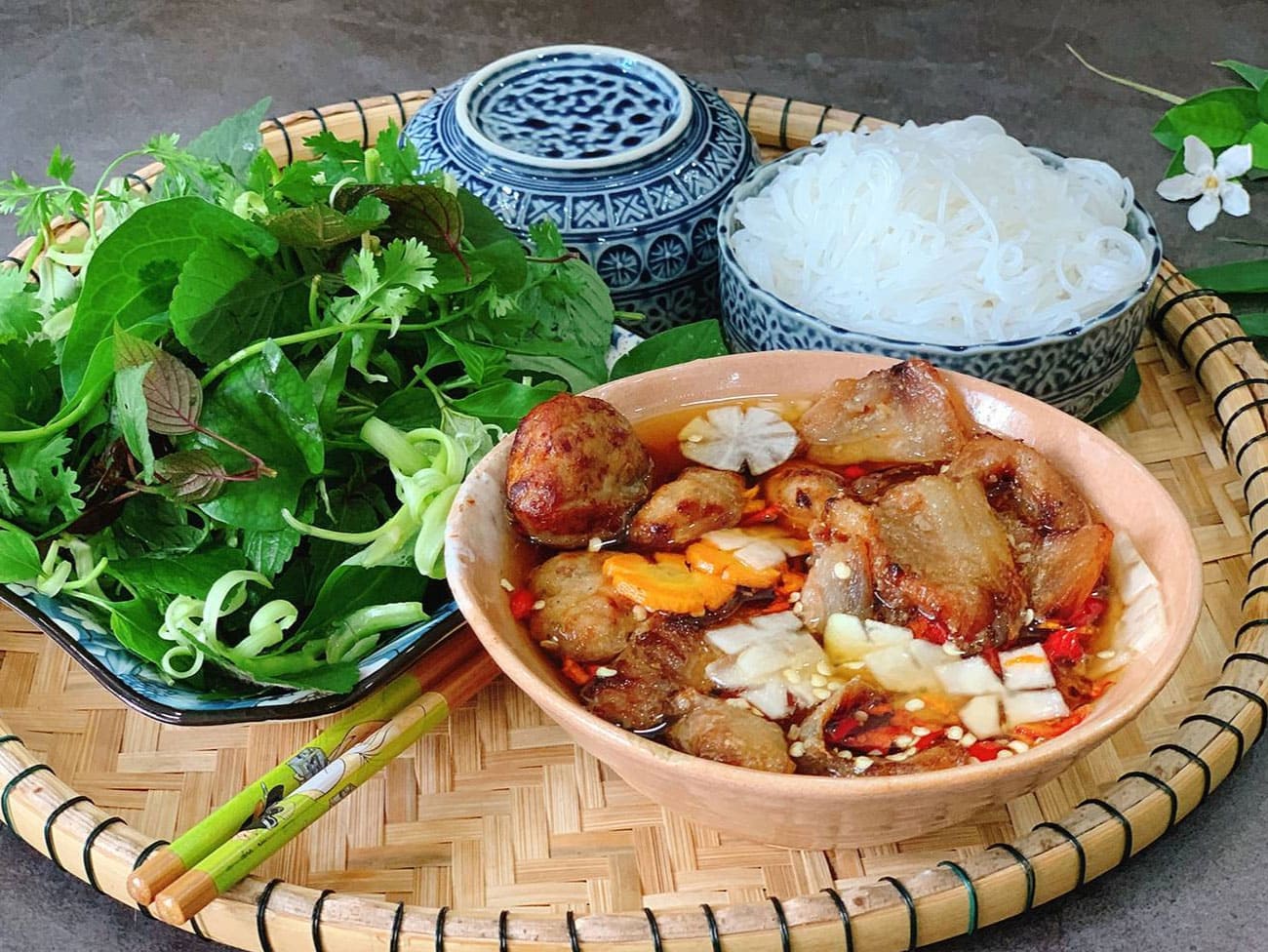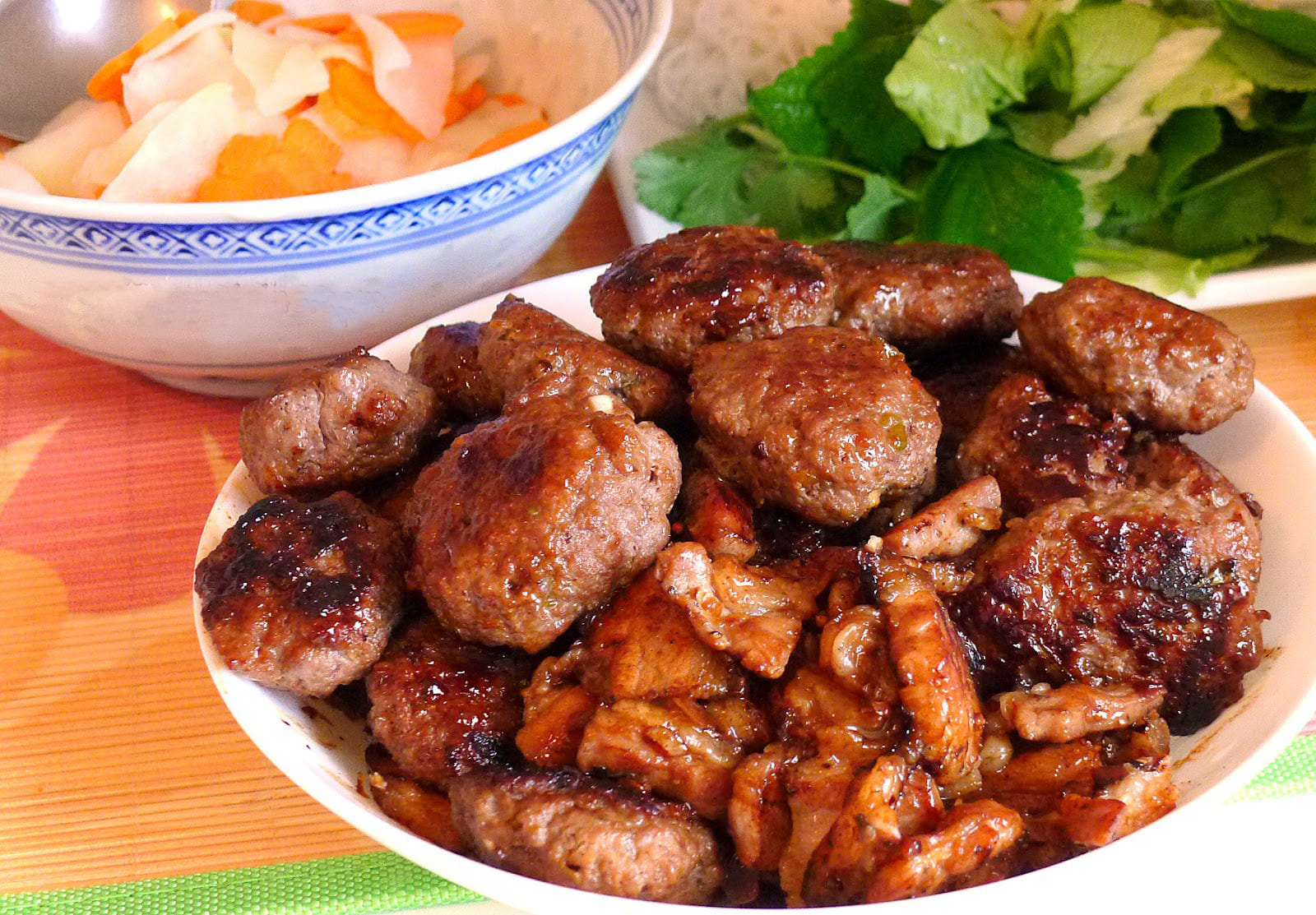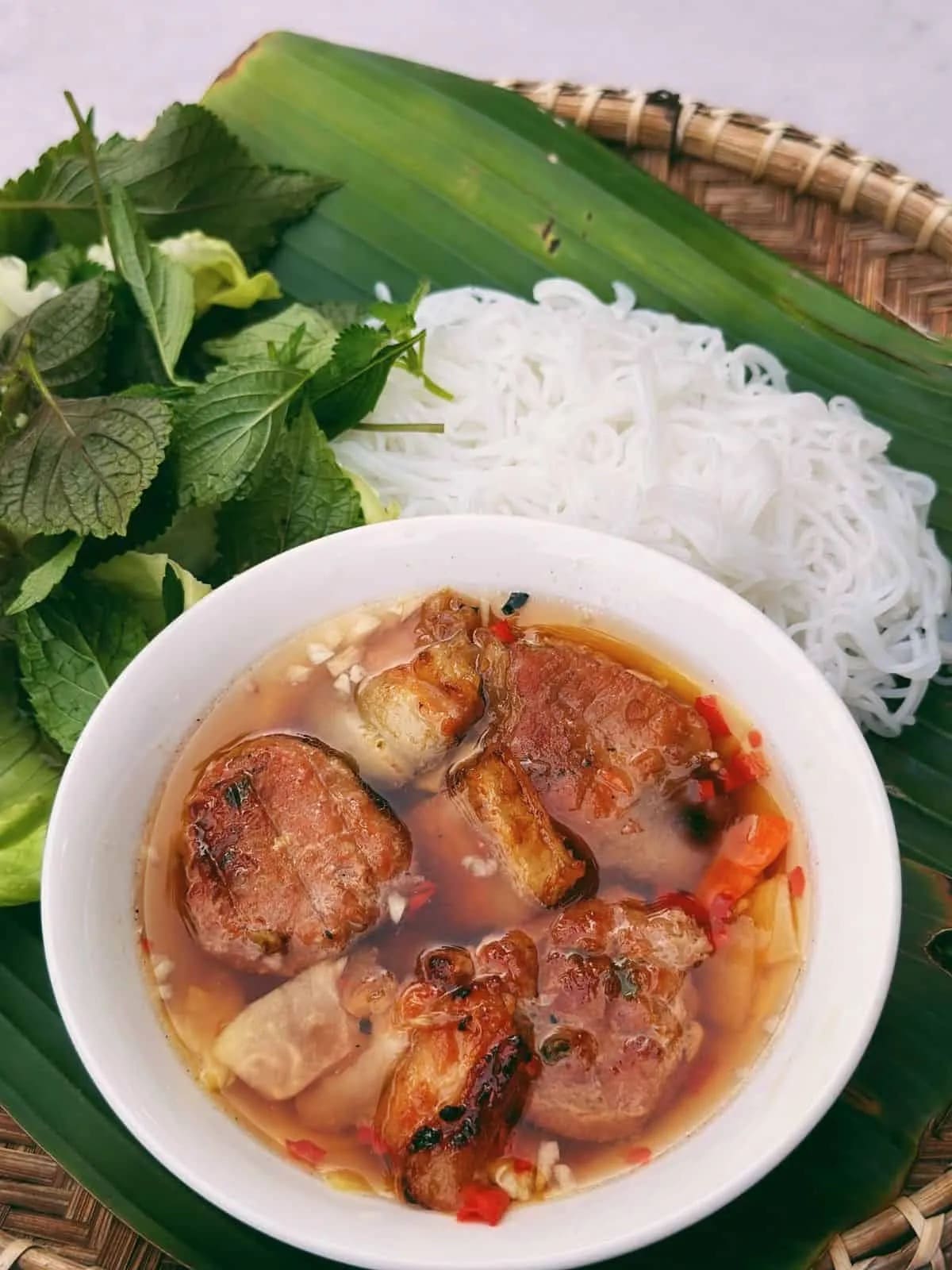Origin and inherent value of bun cha
There is no exact date to record the history of bun cha. It is only known that for a long time, from generation to generation, Hanoi people have been familiar with bun cha and consider it an indispensable dish.
Bun cha is not luxurious; it comes to people simply but is deeply ingrained in the subconscious of many. Bun cha has a very unique flavor that anyone who goes far away will remember.
That is why bun cha has become a cultural beauty, appearing in poetic literature. Wherever bun cha goes, its aroma spreads. This fragrance was also mentioned in the work "Nhung nam thang ay" by Vu Ngoc Phan: "Wherever the bun cha vendor stops, the aroma spreads, the vendor grills the meat over red charcoal in a tin box, the meat sizzles, and smoke rises. With three or five xu, you can enjoy delicious bun cha; making it at home is more expensive and complicated."

In the book "Ha Noi bam sau pho phuong," Thach Lam also describes the irresistible taste of bun cha:
“...There was a scholar from the countryside, one day he came to Hanoi and spontaneously recited two lines of poetry when he smelled the grilling meat smoke:
A thousand-year treasure of Thang Long.
Is this bun cha here?”
Bun cha - A refined culinary dish of Hanoi
Bun cha consists of three main parts: dipping sauce, grilled meat, and noodles. The quality of bun cha is largely determined by the dipping sauce. The sauce is made with a balance of sour, spicy, salty, and sweet flavors using fish sauce, vinegar, sugar, garlic, and chili in appropriate amounts. The sauce always includes a salad made of green papaya, carrots, or in some places, bean sprouts.
The grilled meat has two types: grilled pieces and grilled balls. Grilled pieces are usually made from pork belly to ensure a certain tenderness and sweetness, while grilled balls are round, seasoned, and grilled over red charcoal. The noodles used in bun cha today are usually noodle strands, though traditionally, smaller noodles were more common.

Although it can be eaten at any time of the day, Hanoi people usually enjoy bun cha for lunch. This choice of time is considered one of the unique features of the "culinary art" of the capital, formed over centuries. Sitting on plastic chairs on the sidewalk, slurping a bowl of soft, tender noodles with a bowl of warm dipping sauce has become a very normal activity for Vietnamese people.
The distinctive flavor of Hanoi's bun cha
The rich flavor of the grilled meat, carefully seasoned, with a hint of charcoal smoke, eaten with noodles and various fresh herbs, along with a sweet and sour dipping sauce, creates a harmonious and outstanding experience. All these elements come together to form a delightful combination, making it hard for anyone to forget after just one taste.
To truly enjoy bun cha at its best, it’s also important to eat it the right way. People in the capital often say that eating bun cha properly means pairing it with many types of green vegetables such as lettuce, herbs, and perilla. Pick up a chopstick of noodles, dip it into the bowl of dipping sauce filled with grilled meat, add some fresh herbs, and enjoy the harmonious, delightful taste that fills the mouth.

Not only famous throughout the country but bun cha also makes international tourists fascinated and constantly mention it. In 2016, the bun cha dinner of US President Barack Obama and chef Anthony Bourdain in Ha Noi created an “extraordinary effect.” A well-known figure in politics and a famous figure in the culinary world, those two souls met over the dish… bun cha Ha Noi. The image of the most powerful man in the world sitting on a plastic chair, eating bun cha, drinking cold beer with a simple but elegant white shirt in Vietnam became one of the most impressive highlights in the hearts of the public for a long time after that. Even after some time, domestic and international newspapers still discussed the meal as well as the simple yet wonderfully flavorful bun cha.
Bun cha is special in its own way, not too ostentatious but attractive enough with its inherent simplicity. Through many historical ups and downs, bun cha still retains its distinctive flavor, maintaining its position as one of the national soul dishes of Vietnamese cuisine.
Why Choose NoodleSaigon20 Pho and Vermicelli?
At NoodleSaigon20, we believe that selecting the right rice is crucial to crafting authentic and delicious pho and vermicelli. We use carefully chosen rice varieties to produce high-quality noodles, ensuring an exceptional culinary experience for our customers.
01Traditional flavor, exceptional quality02International HACCP-certified factory
03Advanced freezing technology for preservation
04Convenient and easier to prepare compared to dried noodles
05Favored by international diners, exported to countries like Korea, Japan, etc.
|
Currently, the product is available for wholesale/retail in South Korea. You can place orders via Hotline, message on the Fanpage, or order directly on Coupang: |


